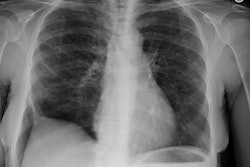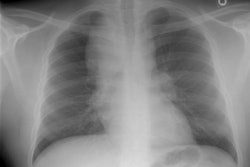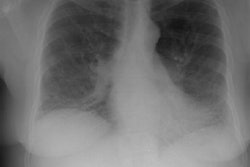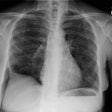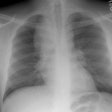Chest 1994 May;105(5):1462-1466
A clinical study of idiopathic eosinophilic pneumonia.
Hayakawa H, Sato A, Toyoshima M, Imokawa S, Taniguchi M
Second Department of Internal Medicine, Hamamatsu University School of Medicine, Japan.
To better characterize idiopathic eosinophilic pneumonia (IEP), we studied the clinical and laboratory features of 27 patients. Patients with IEP could be divided into those with chronic eosinophilic pneumonia (CEP) (n = 14) and acute eosinophilic pneumonia (AEP) (n = 13). CEP was characterized by (1) multiple and dense areas of consolidation on chest radiographs and computed tomographic (CT) scans, (2) persistent symptoms, (3) a requirement for steroid therapy, and (4) possible relapses. On the other hand, AEP was characterized by (1) diffuse ground-glass and micronodular infiltrates on radiographs and CT scans (in mild cases, the lesions were sparse or localized), (2) acute onset with high fever, (3) spontaneous improvement, and (4) no relapse. In addition, peripheral blood eosinophil count was significantly higher in patients with CEP than in patients with AEP at the first examination. However, the eosinophil fraction also became markedly elevated during the subsequent courses of AEP. Analysis of bronchoalveolar lavage fluid revealed that the percentage of eosinophils was higher in patients with CEP than that in patients with AEP, whereas the percentage of lymphocytes was significantly greater in patients with AEP than patients with CEP. It was also noted that 75 percent of patients with CEP and 82 percent of patients with AEP had allergic diathesis, suggesting that both conditions are likely to occur in atopic individuals.
PMID: 8181338, MUID: 94237009
